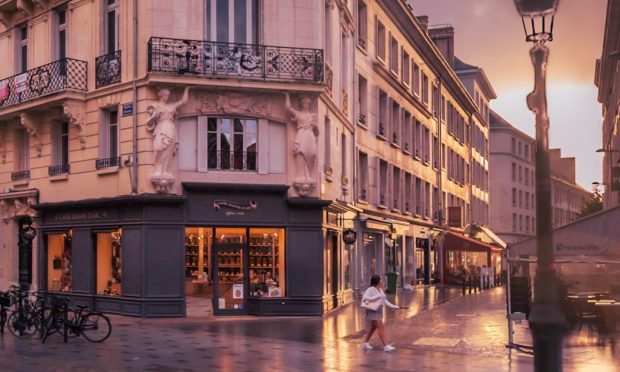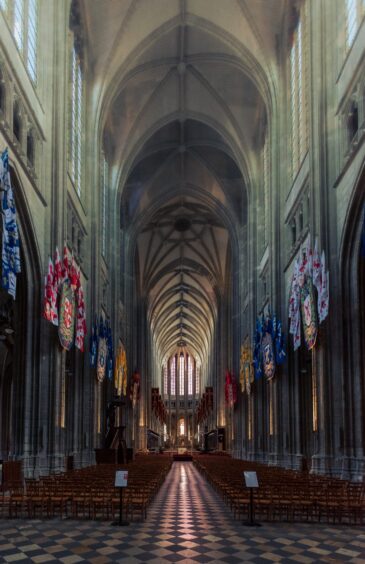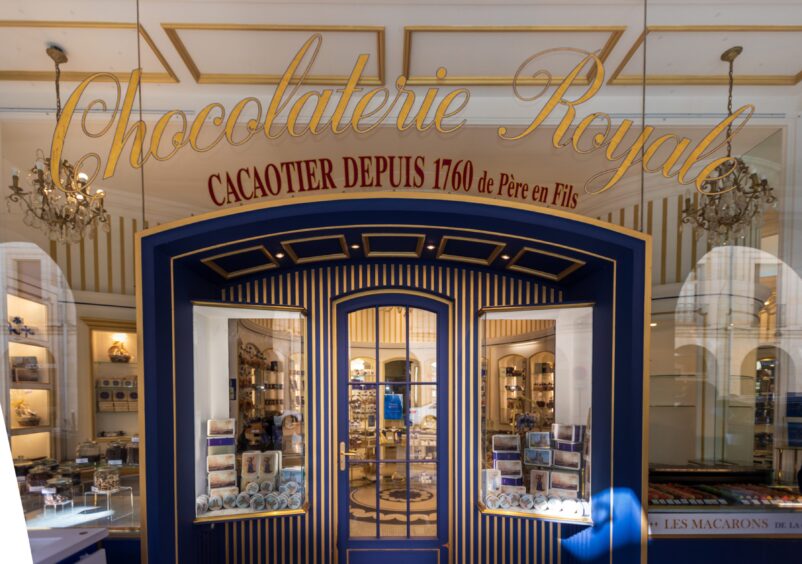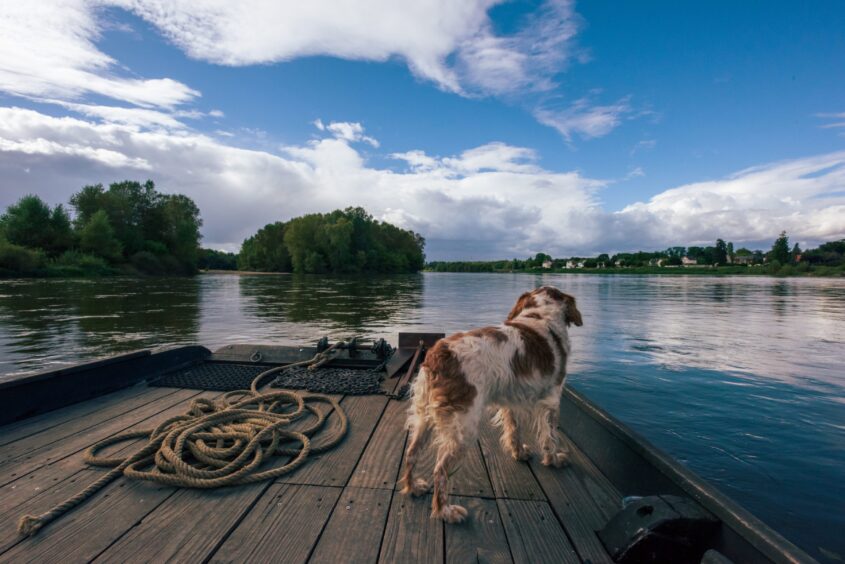
Down a Roman-style stone road in a side street of the central French city of Orléans, a seemingly ancient building is dappled in autumn sunlight.
The stonework is pock-marked by history and the sun shifts and sways, oscillating between the building’s limestone and red-brick facade.
A small marble plaque celebrating the heroes of a battle that took place nearly 600 years ago is mounted on the corner of the building.
The battle was part of the Siege of Orléans, which helped propel the fated Jeanne d’Arc (Joan of Arc) to fame. Joan of Arc arrived in this city on the Loire River in late April 1429 and her courage and battlefield strategy helped lift a brutal English siege.
Incredibly, the plaque is not dedicated to French fighters. Instead, the names are very familiar. John Stewart of Darnley, Patrick Ogilvy and Thomas Blair. While the idea of the Auld Alliance between Scotland and France might be one we are familiar with, here is proof carved in stone.
Today, references to Joan of Arc are everywhere in the city. The main boulevard running in a straight line to the city’s cathedral is called Rue Jeanne d’Arc, there are tourist attractions, museums, buildings and coffee shops named in her honour. Even the tramline is called Jeanne d’Arc. For someone who spent just 10 days here, she left an indelible mark.
Orléans blends its rich history with a modern reputation as a university town. At the main square, a majestic statue to Joan of Arc (who else?) dominates. I meet Rod, from the Orléans Office of Tourism, who takes me on a walking tour.
Under a blue sky, we stand and take in its grandeur while young students pose for selfies, their laughs echoing off the beautifully polished stone of the square. This balance of young and old gives Orléans a real vibrance that the history alone cannot.
The other great influence is the mighty Loire River. Like Joan of Arc, the river cuts a course, physically and metaphorically, through Orléans and its people.
It is from this rushing giant – at over 1,000km, France’s longest river – that everything else flows. The Loire rises from the southeast all the way to the Bay of Biscay at Saint Nazaire on the Atlantic coast.
Orléans, situated on the most northerly part of the river, and closest to Paris, emerged as a strategic river port city, through which produce flowed on its way to the City of Lights.
From sugar and chocolate to wine, vinegar and paper, merchants and manufacturers flocked to Orléans. Naturally, the people of Orléans developed a taste for the finer things in life and, little by little, the city became a centre of all things gastronomic.
The confluence of these two great influences can be found at the Café Jeanne d’Arc. Here, coffee and tea experts Adrien Georges and Agnès Laugier explain how Orléans became a foodie capital. The Loire proved vital, giving easy access to the Atlantic where produce from Coffee Belt countries in South America, Africa and Asia flowed into the city.
Later, Orléans Tourism’s Sébastien Poisson and Jean-David Hestin meet me at my hotel, the excellent Novotel Orléans Centre Gare, which, as its name suggests, it right opposite the station where I arrived after a streamlined train journey from Edinburgh via London and Paris.
We walk along the bright boulevards, the sun bouncing off the light stonework which, still wet from a short spell of rain, creates a beautiful, ethereal light.
Jean-David and Sébastien explain how the city underwent a huge transformation in the past decades, with city officials determined to return Orléans to it stunning former glory. As we stroll beneath the arched walkways of the shopping precinct, it is clear the work has paid off. From bright marble roads and ancient architecture to artisan boulangeries and high-end fashion boutiques, this is Paris in miniature.
Away from the bright lights, we arrive at Combleux, a tiny riverside commune east of Orléans. Here, captain Eric of Escapades Ligériennes welcomes us aboard his tiny traditional wooden boat, The Jacques. Cruising along the mighty Loire, we really get a sense of its great power. Eric, meanwhile, is a font of knowledge. He proffers a pair of binoculars. “Look over there,” he says. I focus in on the point near the riverbank and see a turquoise flash as a kingfisher darts by. On our short journey we see egret, kingfishers, cormorants and even evidence of a beaver building its den.
We push on upstream before Captain Eric suddenly powers down the boat. He comes out on deck.
“When the seagulls…” he begins and I do a double take. For a moment I wonder if he is doing an impression of his famous countryman and namesake Cantona during that infamous press conference in 1995. But, he continues: “…are showing their feet, it is time to turn change course.” He explains that, while we can’t see it, the seagulls standing on the water are showing him that there is a sandbank up ahead and it is unsafe to continue.
Back on dry land, I am wowed by the diversity of this small central French city. From history and food to nightlife and nature, Orléans has so much to explore.
It took 10 days for Joan of Arc to leave her mark on this city – it took even less time for the city to leave its mark on me.
Factfile
For prices and to book Novotel Orléans Centre Gare, visit all.accor.com. For more information and to book tours and experiences in Orleans, visit here. For more information on the boat trip with captain Eric, visit here.

Enjoy the convenience of having The Sunday Post delivered as a digital ePaper straight to your smartphone, tablet or computer.
Subscribe for only £5.49 a month and enjoy all the benefits of the printed paper as a digital replica.
Subscribe

